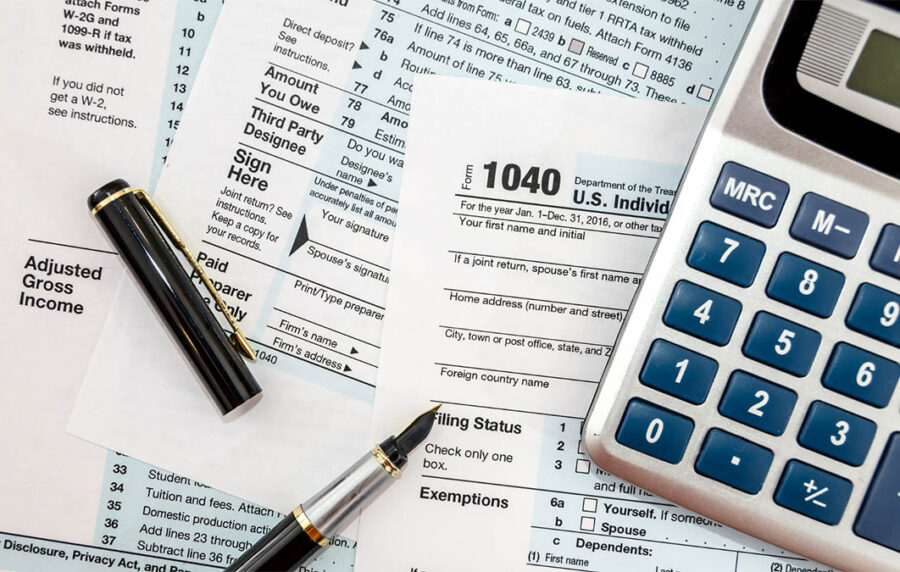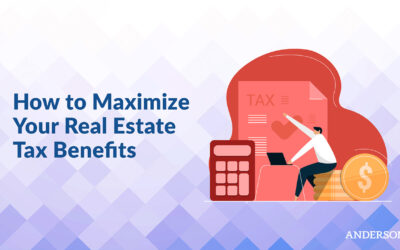Estimated Taxes FAQs
• What are estimated tax payments?
• Who pays estimated taxes?
• How often are estimated tax payments due?
• When are estimated taxes due?
• How do I calculate quarterly tax payments?
• Can I pay estimated taxes online?
• How do I make quarterly estimated tax payments?
• What happens if I don’t pay estimated taxes?
• How much is the penalty for not paying estimated taxes?
• Why do we have to pay estimated taxes?
• Are estimated taxes federal or state?
Federal Income Tax and FICA Taxes
When it comes to the gross income you make over the course of a taxable year, there are two main federal tax concerns you need to worry about: federal income tax and FICA taxes. Your federal income tax rate will depend on how much money you make after FICA taxes are taken out. Tax rates range from 10 percent up to 37 percent, as of 2021. These tax rates are applied to your take-home pay after FICA taxes (also called payroll taxes) are removed from your paycheck. Keep in mind that your state also has income tax, unless you live in one of the handful of states that do not have income tax.
Again, the payroll taxes taken from your income are really called FICA taxes, which stands for the Federal Insurance Contribution Act. These taxes fund Social Security—specifically Social Security Disability Insurance (SSDI) and Supplemental Security Income (SSI)—and Medicare, which is public health insurance for those over the age of 65.
The current tax rates are 6.2 percent paid by the employee and 6.2 percent paid by the employer toward Social Security; the Medicare rate is 1.45 percent paid by the employee and 1.45 percent paid by the employer. Basically, this means that the employee and employer are splitting the tax burden in half for a total of 15.3 percent. If you are employed, you can see these taxes withheld on your paystub. And if your wages are beyond $200,000, your income is subject to an additional 0.9 percent Medicare Tax.
Remember that federal income tax is applied to your take-home pay after FICA taxes, which means you still need to file a tax return—whether you do that yourself on paper, use a program like Turbotax, or pay a qualified accountant or CPA to do it for you. While you will need to figure out your tax burden at the end of the year, FICA taxes are taken out along the way.
Self-Employed Individuals Need to Pay the Entirety of FICA Taxes
But what if you work for yourself? What if you’re a freelance gig worker or run your own business? As you might guess, you still have to pay taxes too. Because nobody is withholding FICA taxes out of your paycheck, you will need to proactively pay estimated taxes to the IRS. And, as it turns out, you also need to proactively pay your federal income tax as well. You may assume that you can just pay your FICA taxes and your federal income tax on your adjusted gross income at the end of the year—after all, the fact that most people fill out their income tax return in late March or early April would lead you to believe that federal tax and state tax are annual concerns. But in all actuality, income tax payments are a pay-as-you-go affair for the self-employed.
Those who are subject to income tax withholding via FICA taxes from their paycheck may not stop to consider this, since their taxable income is already subjected to withholding tax each paycheck. But for a taxpayer who writes their own paycheck (figuratively, or literally if they operate as an S-corp and have put themselves on a payroll), they must make a quarterly estimated tax payment every few months, as directed by the IRS publication that deals with quarterly estimated taxes.
If you’re one of the aforementioned self-employed individuals, and you’ve been running your own business for a while, you are likely already familiar with the quarterly responsibility of paying your estimated income tax. However, if you were previously an employee in the workforce and just recently started your own business or freelancing career, this year might be the first year you’re aware of the estimated income tax payment responsibility that faces self-employed individuals four times annually.
Trying to determine which business entity structure is most advantageous for your company? Let us help! From strategy to paperwork, Anderson Business Advisor’s has you covered every step of the way!
Frequently Asked Questions About Estimated Taxes
What are estimated tax payments?
Estimated tax payments are how you pay taxes on earned income that is not subject to withholding (that is, when an employer takes taxes out of your paycheck). This could be money earned through self-employment, a business, investment income, rental income, and even alimony (money collected from a former spouse). If you choose not to have taxes withheld from other forms of unearned income, such as unemployment and Social Security, you may also need to file estimated tax payments on this money as well.
These estimated taxes are paid to the IRS on a quarterly basis. At the end of the year, after the fourth quarter, your tax bill will be balanced out. You may owe more taxes, or the government may owe you a tax refund. If you are owed a refund, you can either collect it presently or pay it forward to cover next year’s taxes.
For most individuals, the self-employment tax rate they pay will be 15.3 percent, which covers the Social Security benefit funded by taxpayer contributions. It doesn’t stop there, though—after FICA taxes are paid, you still need to pay federal and state income tax on your remaining income. This is why many self-employed individuals create a corporation on paper, so they can put themselves on a payroll and reduce the amount of income subject to FICA taxes.
Who pays estimated taxes?
Anyone whose income will be greater than $1,000 in the calendar year should be paying estimated taxes. But there’s a catch: if their taxes owed will not be greater than $1,000, these individuals don’t need to bother filing quarterly taxes.
Remember that this $1,000 tax burden is after all tax credits are applied. Also, if you had no tax burden in the previous year, you don’t need to be making estimated tax payments for the current year.
How often are estimated tax payments due?
Estimated taxes are due four times per year, at the approximate end of each calendar quarter. Be sure to take a look at these dates and make note of them, because the “quarters” are not actually derived by splitting the year into four equal parts.
When are estimated taxes due?
- Estimated taxes for the quarter beginning January 1st and ending March 31st are due on April 15th.
- Estimated taxes for the quarter beginning April 1st and ending May 31st are due on June 15th.
- Estimated taxes for the quarter beginning June 1st and ending August 31st are due on September 15th.
- Estimated taxes for the quarter beginning September 1st and ending December 31st are due on January 15th of the following calendar year.
If you didn’t do a double take already, you should go back and look at those dates again, because they’re not actually equal quarters. The second quarterly period is only two months long (April and May) while the last one is four months long (September through the rest of the year). Keep this in mind as you estimate your tax payments and prepare to send them in by the deadline.
Another important tip is to look at the quarterly due dates for your estimated state taxes. Sometimes the due dates for the state are not the same as the federal due dates above. Be sure to keep in mind any local county or city taxes you are responsible for, and if you are responsible for making estimated quarterly payments on taxable income to these local jurisdictions.
How do I calculate quarterly tax payments?
If you use accounting software like Quickbooks, your estimated quarterly taxes will be automatically calculated. That makes it easy, doesn’t it? But if you don’t use accounting software, there are other ways to calculate your quarterly tax payments.
One simple way is to take the total taxes owed on your 1040 from the previous year and divide that number by four. Even though the four quarterly periods outlined by the IRS are not the same length of time, there are still four quarterly periods that will add up to one number—which may very well be similar to the tax burden you carried last year.
However, as you probably already know all too well, running a business or managing your own income stream is always a little more nuanced than future projections based on past results. For instance, in previous years you may not have taken advantage of tax savings tools like the home office deduction. To get a little more granular with this particular example, you may have used the standard office deduction instead of using the area method or number of rooms method, which could have yielded greater savings. Why estimate your current taxes (and pay them preemptively) based on the errors of the past? This is where working with a qualified and experienced tax advisor can save you lots of money by keeping more of your earned income in your pocket.
Can I pay estimated taxes online?
Yes, you can. Just use the IRS payment portal (called the EFTPS or Electronic Federal Tax Payment System) to pay your federal estimated taxes. As far as your state taxes go, do a quick internet search by typing in the name of your state and then “quarterly tax payments online” to see what comes up at the top of the search results. If you live in Texas, Florida, Tennessee, Alaska, Washington, South Dakota, Nevada, and Washington, you don’t need to bother conducting this search, because these states don’t have any income tax.
How do I make quarterly estimated tax payments?
The first thing you need to do is complete Form 1040 ES, which is a tax worksheet provided by the IRS to figure out your estimated tax payments. This form is available online, and in addition to serving as a worksheet to calculate your tax payment, it provides detailed information on pretty much everything to do with estimated tax payments. Much of that information has been (or will be) touched upon in this article, but if you want to see the information directly from the source, look to form 1040 ES.
Once you’ve arrived at an answer, taking into account your income, deductions, and credits, you should double check your math by using something like the Estimated Payments Calculator provided by the Center on Budget and Policy Priorities—or better yet, a CPA.
If everything checks out, it’s time to make your payment. As mentioned, you can make this payment online or over the phone by calling any of the following numbers:
1-888-UPAY-TAXTM (1-888-872-9829)
1-888-PAY-1040TM (1-888-729-1040)
1-844-729-8298 (1-844-PAY-TAX-8TM)
You can also mail a check or money order to the IRS, but the address you send it to varies depending on the state you live in. There are three locations set up to receive estimated payments: one in Cincinnati, Ohio; one in Charlotte, North Carolina; and one in Louisville, Kentucky. Check Form 1040 ES to see where your state needs to send a check or money order. Note that the IRS does not accept checks of $100 million or more.
What happens if I don’t pay estimated taxes?
If you don’t pay your estimated quarterly taxes, and you had no tax burden last year and/or your tax burden this year will equate to less than $1,000 (or your income will not exceed $1,000)—then you don’t need to worry about paying estimated taxes.
However, if your income will likely exceed $1,000, taxes are not withheld from your income, and/or your tax burden will likely be greater than $1,000 and/or you did have a tax burden last year, you need to pay quarterly taxes. If you don’t, you may receive a Form C3PO in the mail. That’s no joke, even though the name of this IRS form bears exact resemblance to the gold metal android companion of R2D2 in Star Wars.
The C3PO notice is basically the IRS letting you know that they may assess a penalty against you at the end of the tax year because they believe you are underpaying your estimated taxes. You will eventually have to pay the back taxes you owe, plus additional fees and penalties, which will vary based on the amount you owe.
Typically, the IRS will assess a fee of 0.5 percent of the taxes you owe if you don’t pay them by the due date, increasing every month until they’re paid. The penalty caps out at around 25 percent. For a more detailed list of the penalties involved, see Publication 505, Tax Withholding and Estimated Tax. If you were subject to damages or displacement from a natural disaster (e.g. mudslide, hurricane, wildfire) or unusual circumstance; over the age of 62; a recent retiree; or someone who recently became disabled, your underpayment (or no payment) may not be subject to an underpayment penalty.
Why do we have to pay estimated taxes?
Some people might wonder why we have to pay any income tax at all. After all, income tax is only a relatively recent part of the economic landscape, beginning with the Civil War and becoming fully ratified at the turn of the 20th century. But political philosophizing aside, income taxes are here to stay, and are used to fund programs and social services that are here to stay, such as Social Security and Medicare. Of course, that also references FICA taxes, specifically. Income tax on take-home pay funds all sorts of other things, from National Parks to the Defense Budget.
All employees pay these taxes, as they’re withheld from their paychecks along with the income tax they pay at the end of the year. Someone who is self-employed or has their own business cannot escape the certainty of these taxes. Just because they aren’t being taken out of a periodic paycheck doesn’t mean they don’t need to be paid.
There are plenty of legal ways to pay less taxes, or even avoid taxes entirely. A good place to start is something by attending our Tax Tuesday Webinar, which goes into more depth about specific tax-saving strategies.
In any case, corporations and businesses also pay taxes on a quarterly basis, not just annually like individual taxpayers. This is probably because the government would rather have consistent cash flow rather than be paid in one lump sum every April.
Are estimated taxes federal or state?
Estimated quarterly taxes apply on both federal and state levels. However, as mentioned, there are a handful of states that do not have income tax, so accordingly estimated taxes do not apply in these regions. Check to see if your city or county also has any requirements around reporting and paying estimated quarterly taxes.
You May Have to Pay Estimated Taxes, But There Are Always Ways to Save
We tend to think of taxation as an annual affair, at least when it comes to income tax. But if you’re a freelancer, gig worker, own your own business, or derive income from investments or rental properties, you may need to pay taxes on a quarterly basis. Once the year is over, if you’ve overpaid or underpaid, your tax bill will be adjusted (or refunded accordingly).
In the meantime, you need to cover your bases and pay what you will likely owe ahead of time, just as you would if you were getting a regular paycheck. If you are a gig worker, freelancer, or run your own business, keep in mind that there are strategies you can consider for reducing your tax burden before voluntarily sending the IRS more money than they deserve. Speaking to a qualified CPA or accountant, like those at Anderson Advisors, can also go a long way toward keeping more money in your pocket all year round. Schedule your free consultation today!
Free Strategy Session with an Anderson Advisor
Receive a detailed risk assessment to assist in lowering problem areas that could wipe out all of your assets with one wrong move. Speak with an Anderson Professional Advisor to get your FREE Strategy Session. Limited-Time offer: FREE (a $750 value.)















